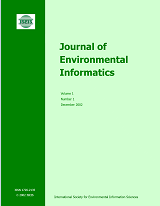doi:10.3808/jei.200600065
Copyright © 2024 ISEIS. All rights reserved
Standardisation in Mapping and Monitoring of Invasive Alien Plant Species
Abstract
The control and eradication of invasive alien plants in South Africa where about 10.1 million hectares of land has been invaded requires information about their extent and distribution. In this study it has been shown that in order to effectively and economically control invasive alien plants in the St. Lucia Heritage Site, the Working for Water organisation requires data on the extent and distribution of invasion not only of its operational areas but also of the surrounding areas. Information on extent and distribution requires the compiling data from multiple sources. Multi source data integration has been shown to be a troublesome exercise due to differences in methods in data acquisition, representation, coding, classification, scales, map projections, and mapping formats. Such data integration can only be made possible when organizations with a common goal adopt a common approach that would facilitate sharing data and information. In this study it has also been shown that multi-source alien species data integration and comparability of data amongst organizations was made possible through the adoption and successful implementation of data formats, data exchange, and user design standards. It has also been shown that mapping the extent and distribution of invasive alien plants requires the development of a geographic information system known as the Alien Plants Management Information System (APMIS). APMIS integrates data from multiple sources through the development and adoption of standards known as Geocode. Geocode is made up of the Land Mapping Unit (known as NBAL) and a date field so that both the spatial and temporal state of alien distribution and eradication can be recorded. This coding standard does not only indicate which location and time a species was found but also ensures comparability over time on how the distribution and eradication was progressing. The Geocode (NBAL + Date) can be very useful in modelling both the spatial and temporal variability of land mapping units and can be applicable in the areas of agricultural weed eradication programmes and in complex humanitarian environments where multiple organizations need to share data.
Keywords: Biological diversity, invasive alien plants, Geographic Information Systems, standards, systems development methodology
Full Text:
PDFSupplementary Files:
Refbacks
- There are currently no refbacks.
